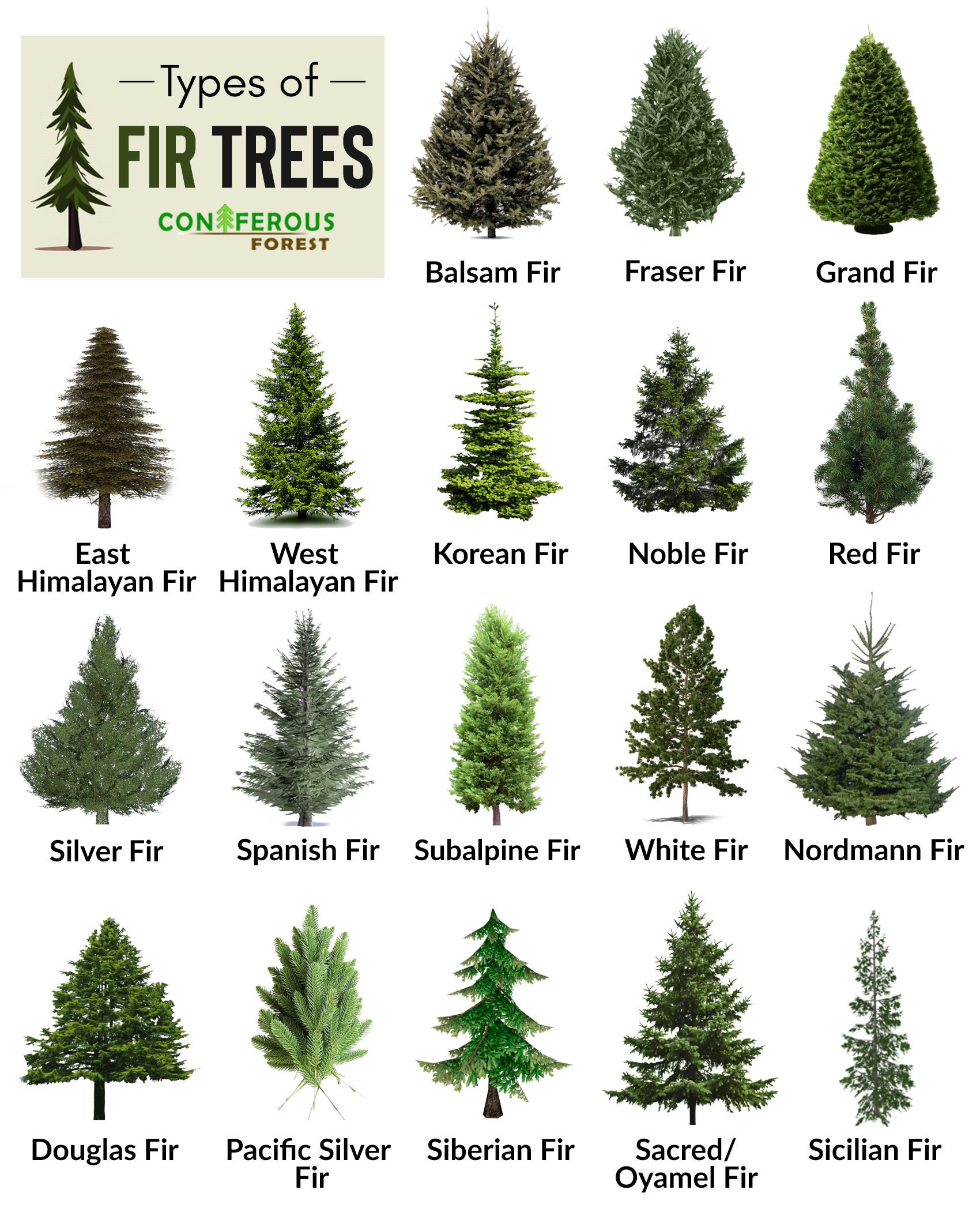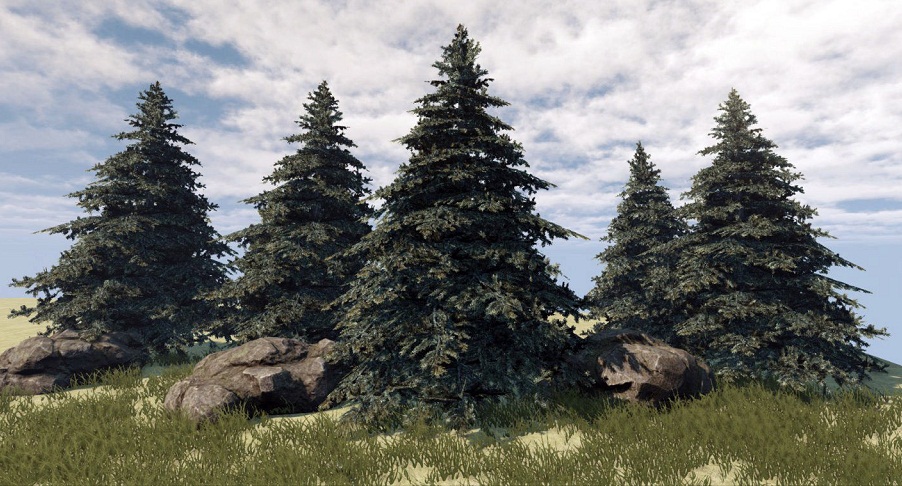Fir
Fir Trees: Majestic Evergreens with Unique Features and Ecological Importance
Imagine walking through a dense forest where towering Fir Trees rise above, their fragrant, needle-like leaves dancing in the wind. With their striking cones perched upright like candles and their rich green foliage, the Fir Tree has been a symbol of both strength and beauty for centuries. From mountain ranges to home landscapes, these evergreens are a testament to resilience in nature.
The Fir Tree (Abies spp.) stands tall as one of the most iconic evergreens in the world. Known for its tall, conical shape and soft, upright cones, the Fir is not only a beautiful addition to the landscape but also plays a vital role in its ecosystem. Whether it’s the Noble Fir that graces the Pacific Northwest or the Fraser Fir cherished for its role in holiday traditions, the Fir Tree has carved out a significant place in both natural and human history. From their fragrant wood to their critical role in stabilizing soils, Fir Trees are truly a marvel of nature.
Fir is any of the species of conifers belonging to the genus Abies included in the Pinaceae (or pine) family. These large trees, although closely related to cedars, can be distinguished from other conifers by their soft cones that perch upright like candles. Unlike the paired needles of spruce and bunched, cluster-like needles of pine trees, fir needles attach singly to the twigs with the arrangement resembling a small suction cup. Several fir species, including the balsam fir, are used as ornamental trees.
Scientific Classification | |
| Kingdom | Plantae |
| Clade | Tracheophytes |
| Division | Pinophyta |
| Class | Pinopsida |
| Order | Pinales |
| Family | Pinaceae |
| Subfamily | Abietoideae |
| Genus | Abies |
List of Different Types of Fir Trees
The genus Abies includes 48-56 species of true firs that are classified into nine extant sections and one extinct section. Other coniferous trees such as Douglas fir, joint fir, and hemlock fir are also called firs, but they are not true firs because they belong to different genera like Pseudotsuga, Ephedra, and Tsuga. The various sections of fir trees along with the species are given below:
Section Abies
- Silver fir (Abies alba)
- Sicilian fir (Abies nebrodensis)
- Bulgarian fir (Abies borisii-regis)
- Greek fir (Abies cephalonica)
- Caucasian fir or Nordmann fir (Abies nordmanniana)
- Spanish fir (Abies pinsapo)
- Algerian fir (Abies numidica)
- Syrian fir (Abies cilicica)
Section Balsamea
- Fraser fir (Abies fraseri)
- Balsam fir (Abies balsamea)
- Subalpine fir (Abies lasiocarpa)
- Siberian fir (Abies sibirica)
- Sakhalin fir (Abies sachalinensis)
- Korean fir (Abies koreana)
- Khinghan fir (Abies nephrolepis)
- Veitch’s fir (Abies veitchii)
Section Grandis
- Giant fir or grand fir (Abies grandis)
- White fir (Abies concolor)
- Durango fir (Abies durangensis)
- Jalisco fir (Abies flinckii)
- Guatemalan fir (Abies guatemalensis)
Section Momi
- Taiwan fir (Abies kawakamii)
- Nikko fir (Abies homolepis)
- Min fir (Abies recurvata)
- Momi fir (Abies firma)
- Baishanzu fir (Abies beshanzuensis)
- Manchurian fir (Abies holophylla)
- Shensi fir (Abies chensiensis)
- Pindrow fir (Abies pindrow)
- Ziyuan fir (Abies ziyuanensis)
Section Amabilis
- Pacific silver fir (Abies amabilis)
- Maries’ fir (Abies mariesii)
Section Pseudopicea
- Delavay’s fir (Abies delavayi)
- Faber’s fir (Abies fabri)
- Forrest’s fir (Abies forrestii)
- Bhutan fir (Abies densa)
- East Himalayan fir (Abies spectabilis)
- Farges’ fir (Abies fargesii)
- Fanjingshan fir (Abies fanjingshanensis)
- Flaky fir (Abies squamata)
Section Nobilis
- Red fir (Abies magnifica)
- Noble fir (Abies procera)
Section Bracteata
- Bristlecone fir (Abies bracteata)
Section Oiamel
- Hickel’s fir (Abies hickelii)
- Sacred fir (Abies religiosa)
In addition to the abovementioned fir species, there are several cultivars, including ‘Glauca’, ‘Revoluta’, ‘Nana Compacta’, ‘Pendula’, ‘Loggerhead’, ‘Little Jon’, and ‘Stairii’.
Quick Information | |
| Tree Type | Evergreen coniferous |
| Identification | Height: 33-262 ft Leaves: Needle-like, flattened, two white lines on the bottom, about 1 in long Trunk Diameter: 1 ft 8 in-13 ft 1 in Bark: Smooth, gray, turns rough and scaly with maturity Cones: Cylindrical, upright, about 3-10 in long, brown or purple Seeds: Winged Branches: Rigid, erect or horizontal, densely packed with needles Crown: Usually conical |
| Distribution | Much of North America, Central America, Europe, North Africa, and Asia |
| Habitat | Occur in mountainous regions |
| USDA Hardiness Zone | 3-9 |
| Growth Rate | Usually slow and varies from 1 ft to 49 ft depending on the species |
| Lifespan | Can range from 50 years to 300 years, some species may live for 400-500 years |
| Growing Conditions | Sunlight: Full sun to partial shade Soil: Well-drained, sandy, acidic, loamy Water: Moderate to high |
| Drought Tolerance | Moderate |
| Diseases & Pests | Phytophthora root rot and Neonectria canker caused by a genus of oomycetes and fungus respectively |
| Reproductive System | Monoecious |
| Propagation | From seeds |
| Wildlife Value | Monarch butterflies reside in sacred fir trees, native to Mexico and Guatemala, during their fall migration from the US and Canada, caterpillars of several moth species use fir as food |
| Uses | Wood is used as pulp for manufacturing rough timber and plywood; balsam, Fraser, Nordmann, and noble firs make great Christmas trees; East Himalayan fir is used in Ayurvedic medicine as a cough suppressant |
| IUCN Conservation Status | Species like the Sicilian fir and Baishanzu fir are listed as critically endangered, while Fraser’s fir is considered endangered |
Interesting Facts
- Parts of the Himalayan fir can be used for producing incense. Its needles are used for producing essential oil that helps in treating rheumatism.
- The grand fir is considered one of the tallest and fastest-growing fir species.
- Since the Fraser fir is similar to the balsam fir in appearance, it is referred to as ‘she-balsam’.
Conclusion
The Fir Tree is more than just a majestic evergreen; it is a crucial part of our environment. With over 50 species worldwide, these trees thrive in a variety of habitats, from the snowy peaks of the Himalayas to the temperate forests of North America. Their cones and foliage provide shelter for wildlife, while their wood is used in everything from construction to paper products. But Fir Trees also face challenges, from diseases to climate change, making conservation efforts vital to preserving these towering sentinels. By understanding their unique features and roles in ecosystems, we can help protect Fir Trees and ensure their legacy for future generations.
References




